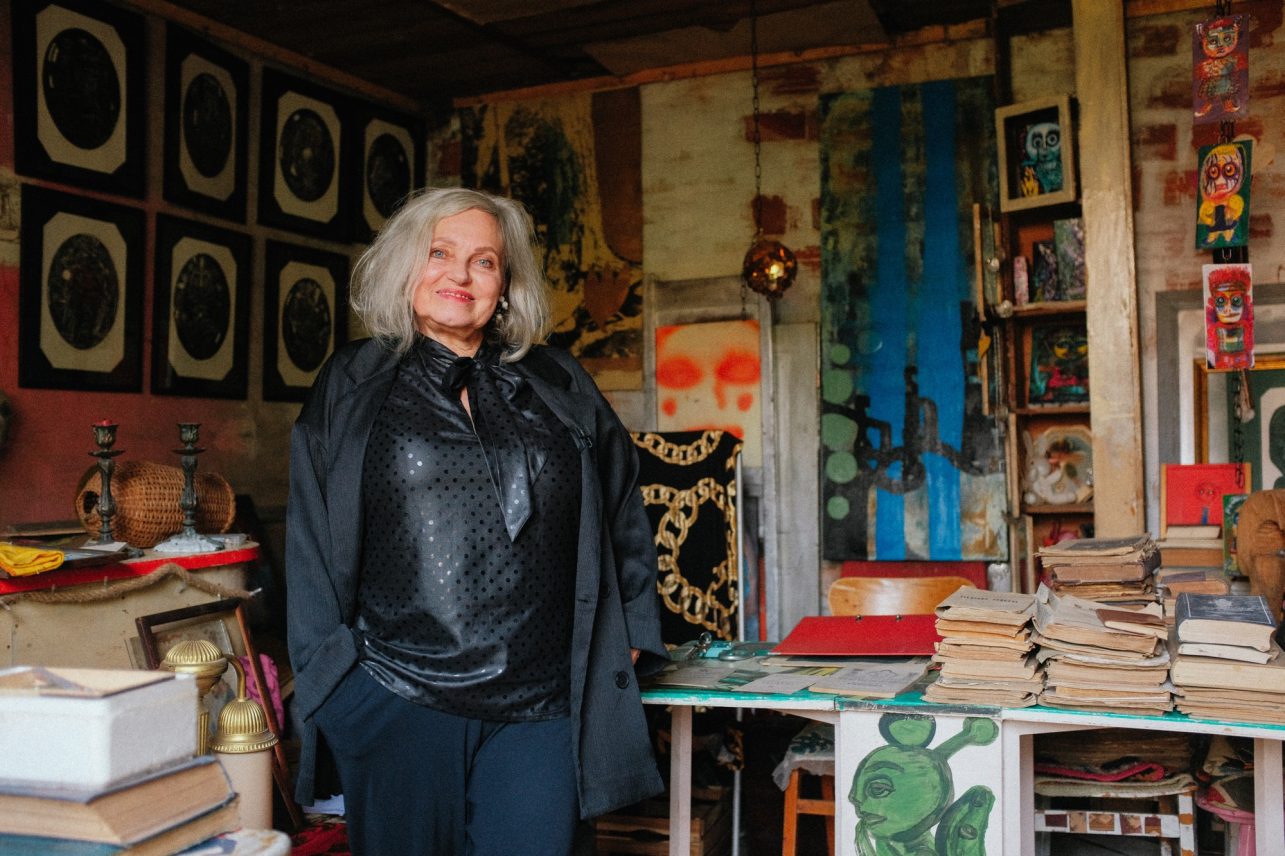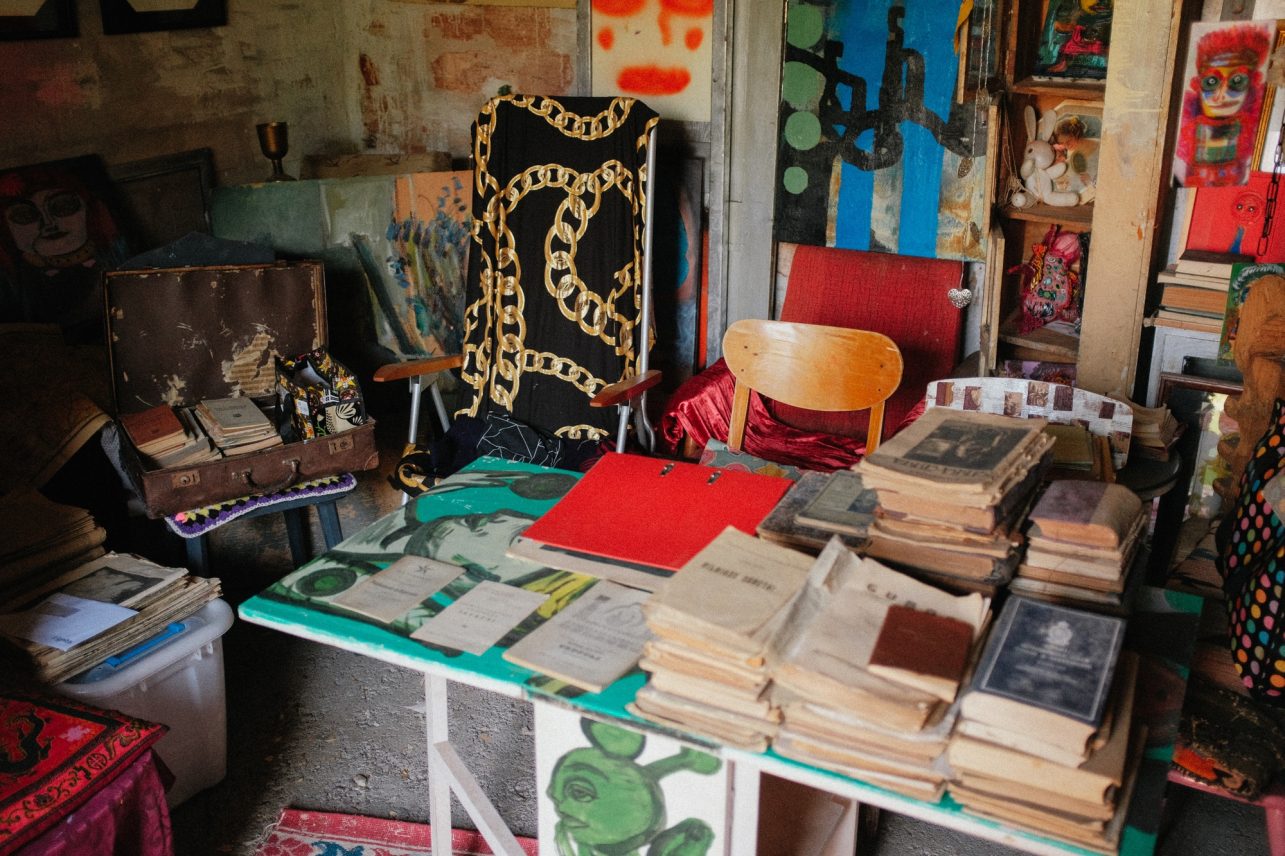At just 150 meters long, Žemuogių (Strawberry) Street covers a disproportionate number of stories. Each building hides the spirit, the objects, and the memories of Kaunas intellectuals, officers, professors, and writers who lived here almost 100 years ago. The house designed by Feliksas Vizbaras is no exception: it was the home of Antanas Gedmantas, a captain in the Lithuanian army and an adjutant of the staff of the Lithuanian Riflemen’s Union. Today, his granddaughter, graphic artist Aistė Ramūnaitė, lives and works in this house. “You wrote at the perfect time!” this is the reply that comes to my inbox from Aistė when I ask to meet for a chat.

Aiste, what is special about this time?
All my life I have been collecting material about my grandfather, trying very hard not to lose or throw anything away. And this summer a man came along, Alvydas Samėnas, the former head of the Ažuolynas Library, who helped me to put everything in order.
What was the impetus for such a big project?
The incentive was the artist Gabrielė Gudaitytė’s Žemuogių g. Ilgo metro knyga apie trumpą gatvę (Žemuogių St. Feature Length Book about a Short Street) in which I found a couple of inaccuracies. I realized that the M. and K. Petrauskas section of the Kaunas City Museum had no information about my grandfather. I wanted to contribute to the history of Kaunas and its preservation by introducing my grandfather’s activities and the Riflemen’s Union Theatre to which he belonged. To tell about his travels and a hobby of collecting.
You’ve lived and worked in London for over a decade. How did it all come about that today we are talking in Žaliakalnis, in your grandfather’s house?
This is a heritage that needs to be taken care of. It’s just my destiny. This house complements me, opens me up, and I open it up. It’s not for nothing that the building is decorated with a sun motif – for me, it’s the sun and the sea. I fall asleep here when the sun goes down into the sea, very naturally, and I can spread my wings safely in my imagination. My grandfather’s care, and the stories of all the people who have lived here, even though some of them were terrible, give me security. There is peace in this house, a balance between good and evil, which is what life is.


As fate would have it, you never met your grandfather – he was arrested in 1941, imprisoned, and later shot in Belarus.
My grandfather became an example to me through my grandmother’s stories: what he did, and how he behaved; I have seen pictures of him. I recently found even more photographs, documents, letters, plays, and programs hidden and buried in the garage. My grandmother did not say anything about it, she did not let me look for it, but she did not let me throw anything away either. That was something I automatically took over, too – to preserve everything until the time came.
What stories about your grandfather stood out the most?
Probably the story of how my grandmother and grandfather met, when my grandmother, at just fourteen, was already playing the piano at the Kaunas Officers’ Club. One evening, while she was playing, my grandfather approached her and started a conversation. A. Gedmantas had completed a drama course under Borisas Dauguvietis. We found in old newspapers that by 1933, my grandfather had performed about 800 times in the Lithuanian Riflemen’s Union Theatre plays. My grandmother was also a musician, so theatre and music intertwined in their daily lives. We also found some critics’ reviews in the newspapers. One of them mentioned that my grandfather had a strong Samogitian accent [laughs].
Another prominent story is about the origin of our family name. Once, while visiting Palanga, Jonas Jablonskis was in the same group as my grandfather. Jablonskis asked my grandfather what his last name was. When my grandfather said “Gedmontas,” Jablonskis corrected him, “You’re not Gedmontas, you’re Gedmantas.” As soon as my grandfather returned from Palanga, he immediately changed his surname to make it correct. Even in such situations, while enjoying the sea, you can achieve a lot by responding to feedback and reacting to it. In life, you always must stay awake and aware. My grandfather is an example like no other.
Aiste, we are very close to the Kaukas (friendly sprite) stairs, and I can’t help but mention the kaukas you created – in one window, a kaukas greets everyone entering your yard.
And only today we noticed that in the booklet from the previous exhibition, I had written down the names of different kaukas in the Samogitian dialect [laughs]. While teaching in Italy, I realized that every city digs up the stories of its past like gold and reinterprets it in a modern way. Then it has a basis, a value, and some weight that can serve as a starting point. The state also encourages interest in that small piece of the city where the artist lives so that they can express it as fully as possible. That’s when I realized that I have a kaukas, and I can convey it. That’s how I founded the gallery.



You mentioned that you have stepped back from the kaukas; you are making abstractions and painting landscapes, but you still remain in the graphic arts sphere.
My grandfather tried different activities, but I remain in the same field of graphic art, and I feel that a person is like a diamond – you can keep polishing it until old age and do things that seem impossible. My graphic art is also experimental; I combine linocut with painterly elements, and, of course, everything is printed by hand.
What creates the unique aura of the city for you?
My opinion on that can change every day. Kaunas is an incredibly cozy city where many different styles have been preserved. In Žaliakalnis, the neighbors are very friendly. The city has many educated, understanding, and radiant people. For me, the knowledge, culture, and nobility of the people are the true spirit of the city.
Aiste, we are talking about your grandfather, but I would also like to remember your grandmother. Probably more than one person has heard about the peonies she grew. Yes, that is why my daughter, and I want to open a peony garden together. It seems that in the past, it was not possible to have fences in one part of Žaliakalnis. So, we want to keep it open. We found photos of my grandmother where we saw only peonies under the windows. We have already planted four of them, so we will see what happens next.
What do you plan to do with the material collected?
We hope to publish a publication that will add to the history of Kaunas. This is both because of the location and because of the UNESCO recognition of Kaunas modernism. My grandfather was also awarded the Rifleman’s Star. I really want to tell the public about my grandfather’s activities in the theatre, as a curiosity of Žaliakalnis. I would like to see three-dimensional kaukas pop up in the publication. I would like to combine my grandfather’s story with my modern interpretation.




